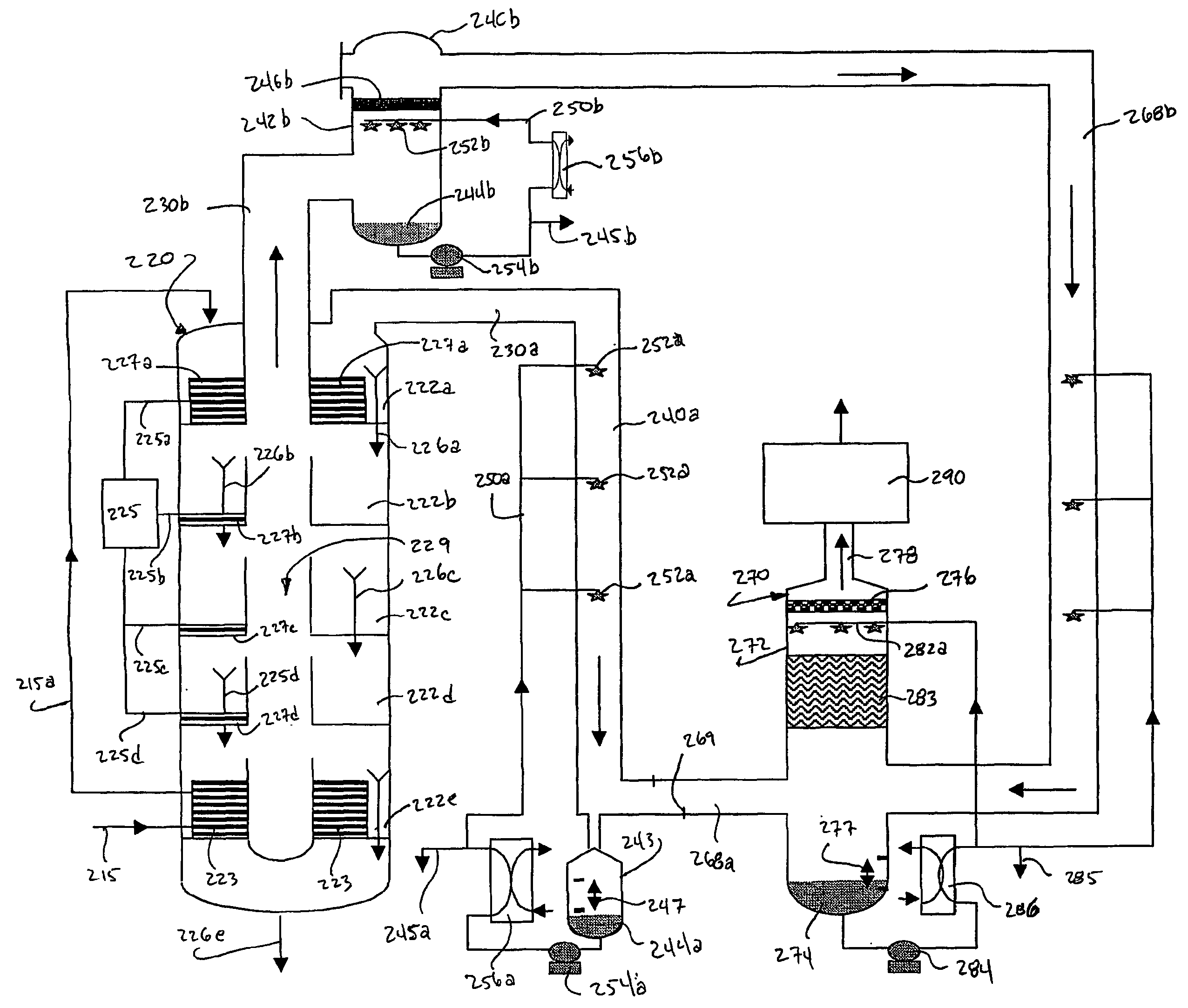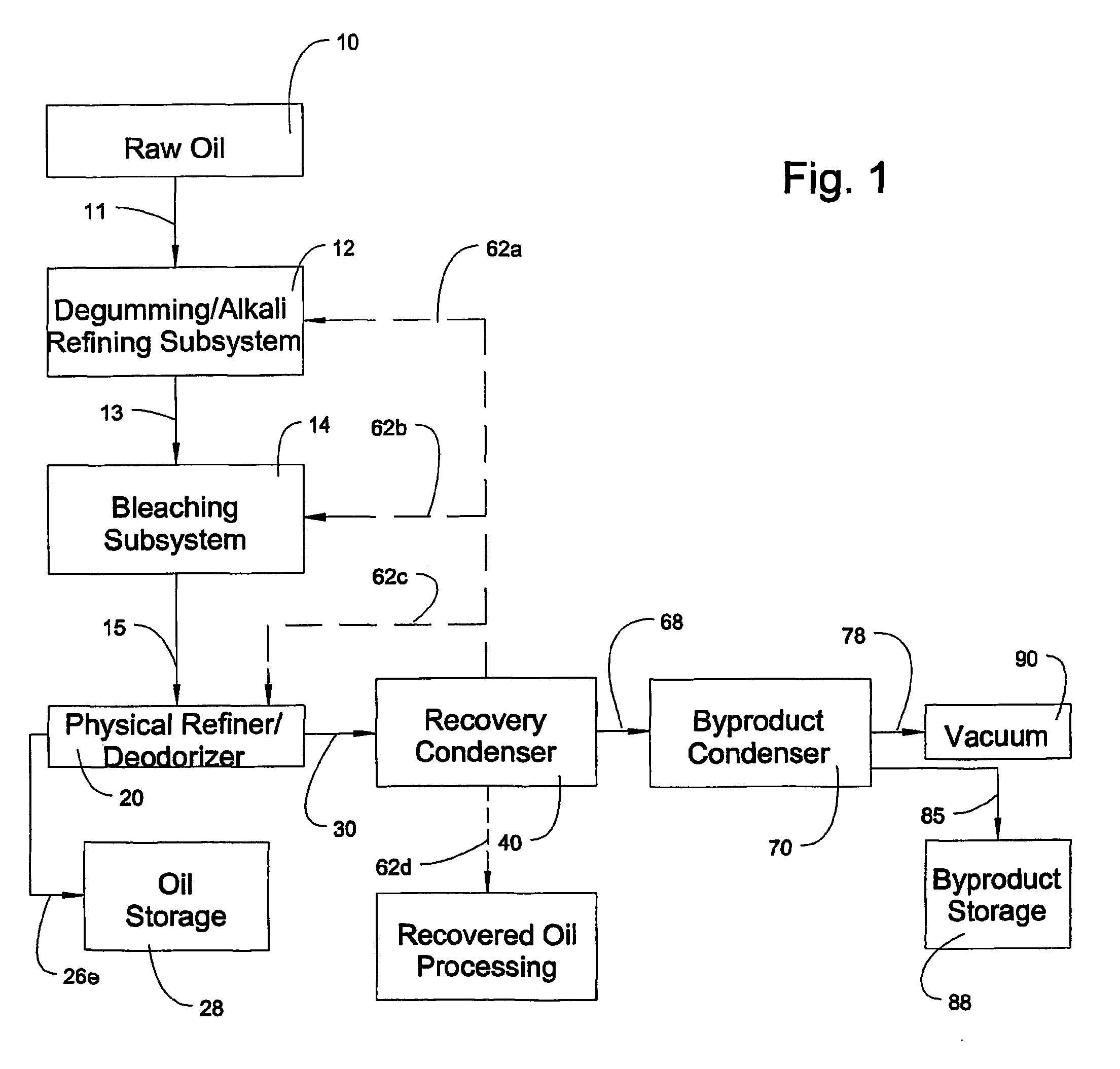Method and apparatus for processing vegetable oils
a vegetable oil and processing method technology, applied in the direction of fatty-oils/fats refining, vacuum distillation separation, separation processes, etc., can solve the problems of vegetable oil processing process less widely used, contaminants which have little or no commercial value, and deodorizer loss of a commercially valuable produ
- Summary
- Abstract
- Description
- Claims
- Application Information
AI Technical Summary
Benefits of technology
Problems solved by technology
Method used
Image
Examples
example 1
[0063]A bleached, unrefined palm oil was delivered to a deodorizer analogous to the deodorizer 20 schematically illustrated in FIG. 2. The oil in each of the deodorizer chambers was maintained at a temperature of about 270° C. and the pressure in the chambers was about 2-3 mm Hg. The vapor stream was cooled in the recovery condenser 40 to a temperature of about 180° C. The recovered fluid from the recovery condenser had a free fatty acid content of about 40 wt. %, with the balance believed to be primarily glycerides and other desirable components of the raw vegetable oil. This recovered fluid was then returned to the flow of oil entering the bleaching subsystem. The byproduct vapor from this process was passed into the byproduct condenser and cooled further to about 60-80° C. The resultant byproduct condensate was found to contain about 93-95 wt. % free fatty acids.
[0064]In conventional operation wherein a standard deodorizer is operated under the same conditions and all of the vapo...
example 2
[0065]Bleached, unrefined coconut oil was physically refined in a system analogous to that shown in FIG. 3. All of the trays 222 in the deodorizer were maintained at about 240-245° C. and about 2-3 mm Hg. The first recovered fluid collected in the collector 243 had a free fatty acid content in excess of 80 wt. The second recovered fluid (pool 244b) had a free fatty acid content of about 30 wt. % and this second recovered fluid was returned to the oil supplied to the bleaching subsystem.
[0066]For conventional physical refining of coconut oil using a standard deodorizer and a standard scrubber, the free fatty acid content of the scrubber distillate will vary significantly depending on the deodorizer conditions. For refined oils having a free fatty acid content of about 0.06 wt. %, the free fatty acid content of the standard scrubber distillate would be expected to be about 60-65 wt. %. For a higher quality refined oil with a free fatty acid content of about 0.02 wt. %, the free fatty ...
PUM
| Property | Measurement | Unit |
|---|---|---|
| pressure | aaaaa | aaaaa |
| pressure | aaaaa | aaaaa |
| pressure | aaaaa | aaaaa |
Abstract
Description
Claims
Application Information
 Login to View More
Login to View More - R&D
- Intellectual Property
- Life Sciences
- Materials
- Tech Scout
- Unparalleled Data Quality
- Higher Quality Content
- 60% Fewer Hallucinations
Browse by: Latest US Patents, China's latest patents, Technical Efficacy Thesaurus, Application Domain, Technology Topic, Popular Technical Reports.
© 2025 PatSnap. All rights reserved.Legal|Privacy policy|Modern Slavery Act Transparency Statement|Sitemap|About US| Contact US: help@patsnap.com



